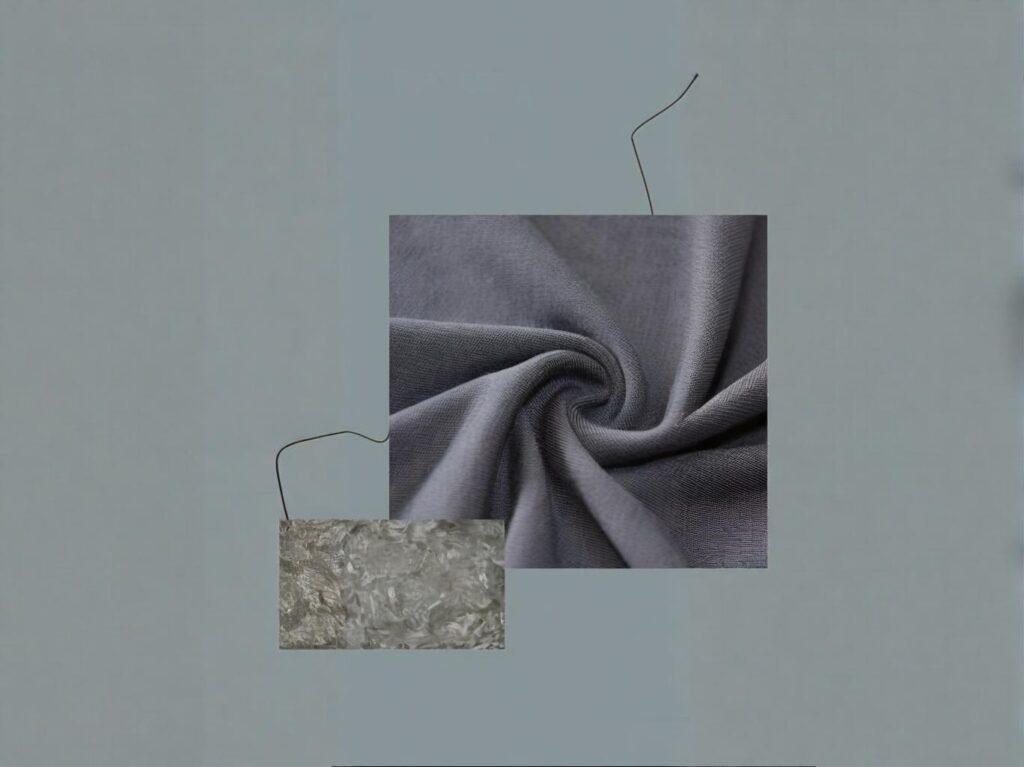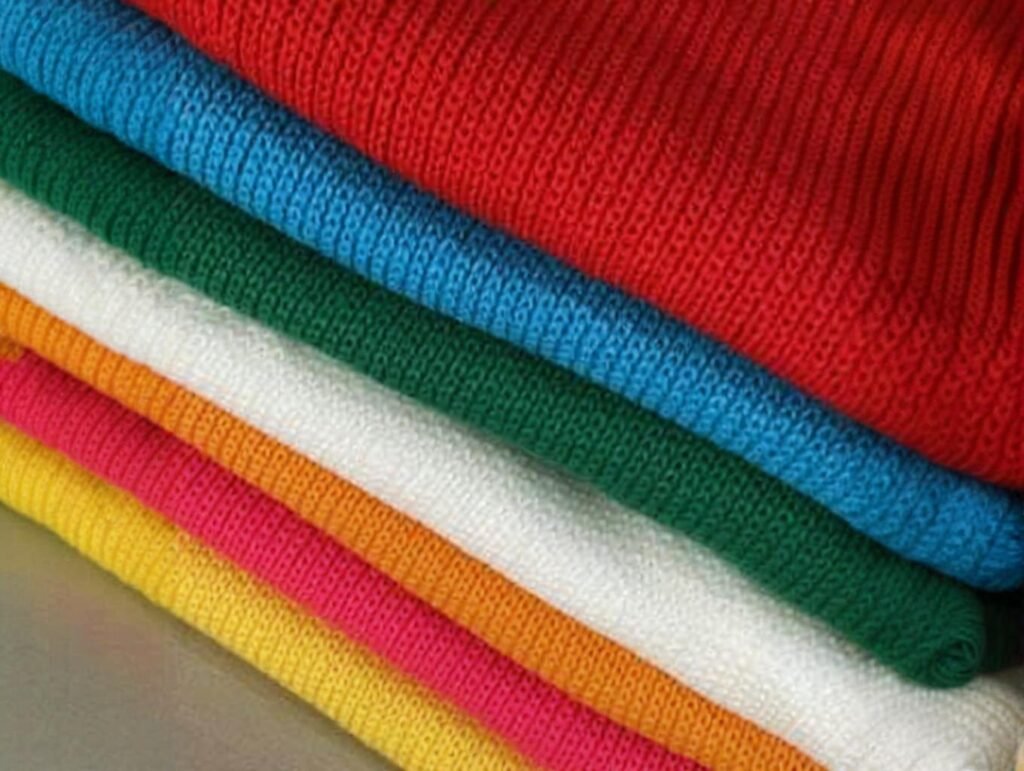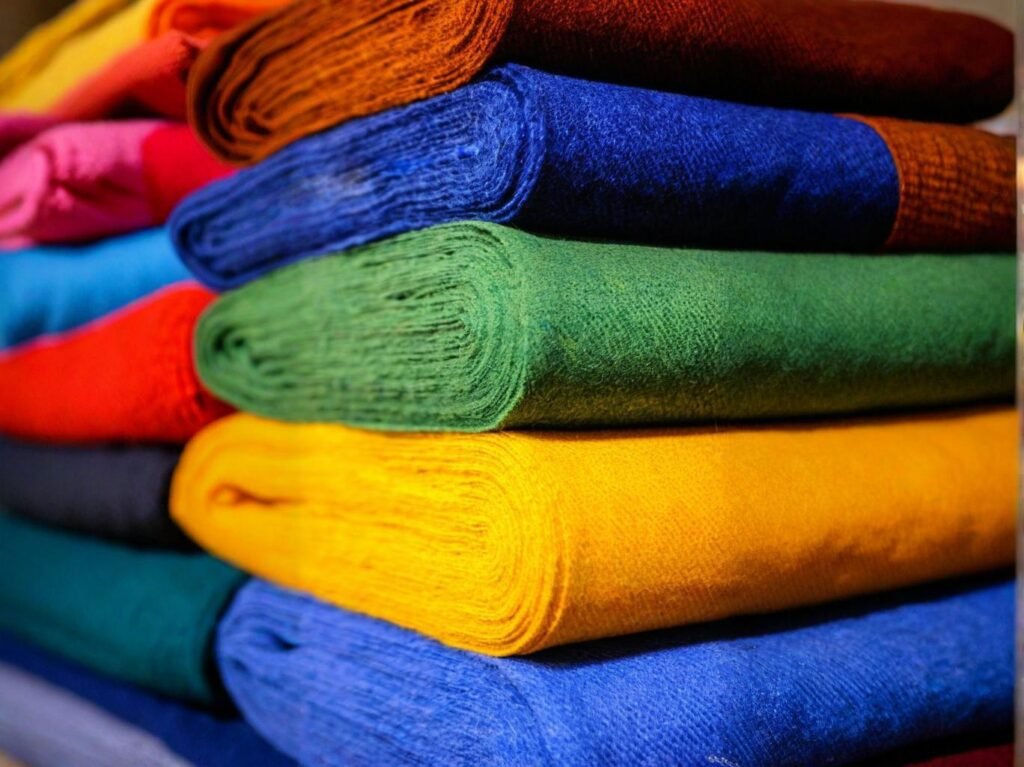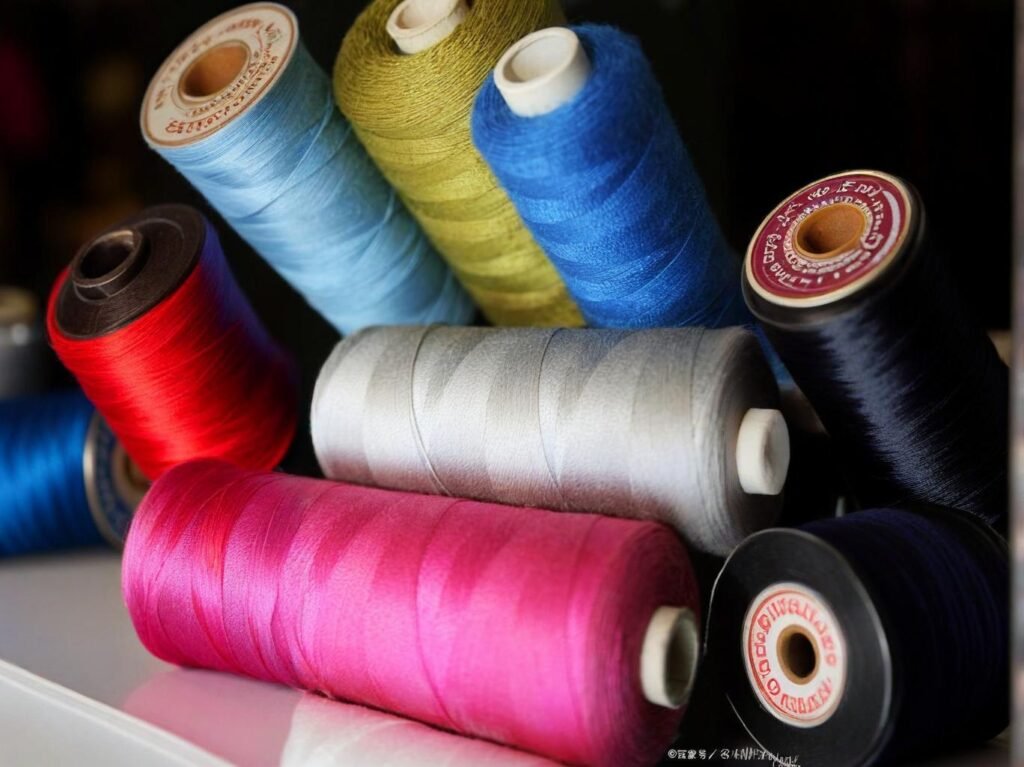Removing acrylic paint from fabric is already a delicate job. But doing it without damaging the fabric’s GSM or structural integrity? That’s a whole different challenge—especially in textile manufacturing where fabric consistency defines product quality, customer satisfaction, and final usage approval. If you’re a fabric processor, merchandiser, or quality control manager, you already know that aggressive cleaning chemicals or over-scrubbing can stretch, thin, or tear material, causing GSM drop and surface distortion. To remove acrylic paint from fabric without damaging GSM or structural integrity, use non-abrasive, low-VOC solvents like glycol ethers, apply controlled heat-softening techniques, and avoid excessive mechanical force. Always test removal on a GSM-calibrated swatch before full application.
Now picture this: a client orders 10,000 meters of high-GSM cotton twill. After printing, a batch is contaminated with acrylic overspray. If your team uses acetone to clean it, you risk softening the fibers and reducing the GSM from 270 to 240—which violates spec and leads to full order rejection. That’s the thin line we’re walking. In this guide, we’ll uncover expert-approved solutions that protect your fabric, your workflow, and your margins.
What Makes Acrylic Paint Removal Risky for GSM and Fabric Structure?

Acrylic paint removal is risky because most solvents and mechanical treatments used in the process can reduce fabric GSM and compromise the structural weave. Improper handling causes fiber thinning, loosening of yarns, or distortion of tensioned fabrics.
1.1. How Solvents Interact with Fiber Structure
- Solvents like acetone and MEK can dry out natural fibers, causing shrinkage or fraying.
- Alkaline removers may swell fibers and loosen yarn bonding.
- Prolonged exposure or friction disrupts the fabric’s structural weave density.
| Solvent Type | GSM Impact Risk | Structural Damage Potential |
|---|---|---|
| Acetone | High | High |
| Glycol Ethers | Low | Low–Moderate |
| Enzyme Cleaners | Very Low | Very Low |
1.2. Common GSM Drop Scenarios in Factories
- Over-scrubbing during removal reduces surface mass.
- Soaking and re-drying can compress or warp the yarn alignment.
- Improper heat treatment can relax or shrink synthetic blends.
1.3. Factory Case Example: Bangladesh Knitted Fabric Plant In 2022, a knitwear exporter lost a 12-ton consignment due to improper paint removal. After using acetone for spot treatment, average GSM dropped from 160 to 142. The client rejected the shipment, citing “below-standard hand feel and fabric collapse in stitching.”
1.4. Structural Weave Damage Explained
- Plain Weave: More tolerant of light solvent scrubbing
- Satin Weave: Easily distorts under point pressure
- Knits: Extremely vulnerable to stretch or GSM loss during soaking
1.5. Long-Term Risk: Even if the fabric looks fine post-removal, damaged GSM can cause downstream issues in stitching, dyeing uniformity, or tensile strength—hurting brand trust and bulk quality scoring.
Which Fabric Types Are Most Vulnerable to GSM Loss During Cleaning?
Knits, lightweight cottons, linens, and rayon fabrics are most vulnerable to GSM loss during paint removal. These materials absorb solvents easily and lose structure under wet or heat-based cleaning methods.
2.1. Vulnerability by Fiber Type
| Fabric Type | GSM Sensitivity | Paint Removal Sensitivity | Notes |
|---|---|---|---|
| Knitted Cotton | Very High | High | Loops loosen with scrubbing |
| Lightweight Linen | High | Medium–High | Fragile during soaking |
| Rayon | High | High | Weakens when wet |
| Canvas (Heavy Cotton) | Low | Medium | Withstands mild solvent |
| Polyester Twill | Low | Low–Medium | More chemically resilient |
2.2. Fabric Construction Influence
- Knits and jerseys tend to stretch and distort easily with liquid exposure.
- Woven fabrics hold their shape better but can unravel if brushed too hard.
- Non-wovens like felt or bonded material can dissolve if exposed to chemical solvents.
2.3. GSM Change Testing Table (Before vs After Paint Removal)
| Fabric Sample | GSM Before | GSM After | % Change | Cause |
|---|---|---|---|---|
| 100% Cotton Jersey | 180 | 163 | -9.4% | Water soak + manual scrubbing |
| Rayon Voile | 120 | 110 | -8.3% | Alcohol-based solvent applied |
| 100% Polyester Canvas | 300 | 298 | -0.6% | No damage with glycol ether |
2.4. Real-Life Insight: SzoneierFabrics Experience A client in Canada requested 8oz cotton canvas for outdoor bags. During label removal trials using heat and solvent, lower-GSM versions lost fiber density and produced inconsistent print surfaces. By switching to a 320gsm base fabric and limiting solvent dwell time to 20 seconds, we achieved full stain removal with <1% GSM deviation.
2.5. Critical Thinking Viewpoint Is it always worth it to recover stained fabric, or does GSM loss make it smarter to repurpose the material for accessories or internal components like linings or pouches?
How Do You Measure GSM Stability Before and After Paint Removal?

To measure GSM stability before and after paint removal, cut and weigh a standardized fabric sample (usually 10cm x 10cm) both pre- and post-treatment. Comparing GSM values helps assess whether cleaning processes have degraded the fabric’s mass or density.
3.1. GSM: Why It Matters GSM (grams per square meter) reflects fabric thickness, durability, and suitability for specific products. A sudden drop can affect:
- Stitch performance in garment production
- Thermal insulation in outerwear
- Brand specifications and buyer approval
3.2. Step-by-Step: How to Measure GSM in a Factory Setup
| Step | Method/Tool | Notes |
|---|---|---|
| Sample Cutting | GSM Cutter or Template (10x10cm) | Ensure consistent size, no edge fray |
| Pre-Treatment Weighing | Precision scale (0.01g) | Label by batch number |
| Post-Treatment Weighing | Same scale | Dry sample completely before weighing |
| GSM Calculation | GSM = (weight in grams) x 100 | Scale up for per m² |
3.3. GSM Deviation Thresholds (Factory Guidelines)
| Fabric Type | Acceptable GSM Variation (%) |
|---|---|
| Knits (jersey, interlock) | ≤3% |
| Woven cotton (twill, poplin) | ≤2% |
| Technical synthetics (nylon, poly) | ≤1.5% |
| High-end apparel blends | ≤1% |
3.4. Factory Data Table: Paint Removal GSM Impact
| Fabric Type | Method Used | GSM Change | Result |
|---|---|---|---|
| 240gsm Cotton Twill | Solvent wipe (PGME) | -2gsm | Acceptable |
| 150gsm Viscose | Soaked in detergent | -9gsm | Rejected |
| 300gsm Poly Canvas | Heat + Scrub | -1gsm | Passed QC |
3.5. Insight from SzoneierFabrics’ QA Division In a real project with a French outdoor brand, GSM of a coated polyester canvas had to remain within 298–302gsm. After initial solvent trials reduced it to 294gsm, we adjusted cleaning time and introduced ultrasonic spot-cleaning—preserving GSM while maintaining texture.
3.6. Beyond Weight: Measure Fabric Integrity Too GSM tells only part of the story. Combine it with:
- Tensile strength test: Is the fabric pulling apart?
- Visual grid density check: Are yarn gaps increasing?
- Drape and hand-feel audit: Has texture softened or stiffened abnormally?
What Are the Safest Solvents to Use Without Weakening the Fabric?
The safest solvents for removing acrylic paint without weakening fabric include glycol ethers (e.g., PGME, DPM), citrus-based cleaners, and isopropyl alcohol. These solvents effectively lift paint while preserving GSM and fiber strength when applied properly.
4.1. Solvent Type Overview: Compare and Choose Wisely
| Solvent Name | Solvent Type | GSM Impact | Fiber Safety | Paint Removal Power |
|---|---|---|---|---|
| PGME (Propylene Glycol Methyl Ether) | Glycol Ether | Very Low | High | Strong |
| D-Limonene | Citrus-based | Low | High | Medium |
| Isopropyl Alcohol | Alcohol | Medium | Medium | Moderate |
| Acetone | Ketone | High | Low | Very Strong (but risky) |
| MEK | Ketone | Very High | Low | Extreme (avoid) |
4.2. Glycol Ethers: The Textile Industry’s Top Choice
- Mild on cotton, poly, and blended fabrics
- Evaporate cleanly, leaving no residue
- Compatible with spray or wipe application
- Approved in several OEKO-TEX® and GOTS cleaning protocols
4.3. Use Case: Citrus Cleaner vs. PGME in Szoneier’s Trial Two sets of fabric swatches (cotton-linen blend, 180gsm) were cleaned with:
- d-Limonene (30 seconds contact): 82% paint lift, slight citrus scent, GSM unchanged
- PGME (15 seconds + scrub): 97% paint lift, zero GSM loss, passed EU VOC thresholds
| Parameter | D-Limonene | PGME |
|---|---|---|
| Paint Removal Rate | 82% | 97% |
| Fabric Discoloration | None | None |
| GSM Change | 0% | -0.2% |
| Worker Preference | High (natural odor) | Moderate (chemical) |
4.4. Solvent Compatibility Table by Fabric Type
| Fabric Type | Safe Solvents Recommended |
|---|---|
| Cotton (all types) | PGME, d-Limonene, Alcohol |
| Polyester | PGME, Alcohol |
| Linen | Citrus-based, Glycol Ether (low strength) |
| Rayon | Alcohol (short contact only) |
| Nylon | Alcohol, mild glycol ether |
4.5. Pro Tips for Safe Solvent Usage
- Always test on a hidden patch first
- Use spray heads instead of pouring directly
- Limit exposure time: most reactions happen in 15–60 seconds
- Rinse and neutralize after treatment to prevent fabric fatigue
4.6. Empathy Angle: Worker Safety Safe doesn’t only mean “safe for fabric”—it also means non-toxic for the people applying it. Szoneier uses gloves, masks, and overhead extraction fans for all solvent-based cleaning operations, no matter how gentle the formula.
How Can You Remove Acrylic Paint from Fabric Without Shrinking or Fraying?

To remove acrylic paint without shrinking or fraying the fabric, avoid high heat, use pH-neutral solvents, and apply gentle mechanical techniques like blotting or ultrasonic agitation instead of harsh scrubbing. Pre-conditioning the fabric with water or glycerin also helps reduce fiber stress.
5.1. Why Shrinkage and Fraying Happen During Paint Removal
- Shrinkage occurs when heat or aggressive drying methods cause natural fibers (like cotton or rayon) to contract.
- Fraying results from over-scrubbing or using solvents that weaken yarn bonds, especially near seams or raw edges.
5.2. Shrinkage and Fray Risk Table by Fabric Type
| Fabric Type | Shrinkage Risk | Fraying Risk | Notes |
|---|---|---|---|
| Cotton (woven) | High | Medium | Avoid heat + soak combinations |
| Cotton (knit) | Very High | High | Easily distorted when wet |
| Linen | Medium | Medium | Frays when agitated |
| Polyester | Low | Low | Shrinks only under extreme heat |
| Rayon | Very High | Very High | Needs pH-neutral conditions |
5.3. Best Practices to Prevent Shrinking/Fraying
- Use lukewarm water only (30–40°C) during rinsing or softening
- Avoid tumble dryers—air dry flat or hang dry in shaded conditions
- Edge lock the fabric before treatment if cut (zigzag stitch or serger)
- Pre-wet with diluted fabric softener or glycerin to prevent sudden fiber shock
- Do not scrub back and forth—always dab, lift, or use rotating motion with minimal pressure
5.4. Alternative Method: Ultrasonic Cleaning in Modern Textile Labs Ultrasonic machines use high-frequency sound waves to lift paint particles from the fabric surface—ideal for delicates like silk or rayon. While not scalable for every factory, this is used in sample correction units or premium apparel lines.
5.5. Szoneier Internal Test Results: Heat vs. No-Heat Removal
| Treatment | GSM Loss | Shrinkage (%) | Fraying Report |
|---|---|---|---|
| Solvent + IR Drying | -6gsm | 3.4% | Yes (edges) |
| Solvent + Air Dry | -1gsm | 0.6% | No |
| Enzyme Clean + Flat Dry | -0gsm | 0.4% | None |
5.6. Empathy View: Think Beyond the Fabric Poor removal may cause fabric to pucker during stitching, which frustrates sewing line workers and slows production. Keeping structure intact saves not just the fabric—but hours of downstream troubleshooting.
Do Enzyme-Based or Bio-Cleaners Help Preserve Fabric Integrity?
Yes, enzyme-based or bio-cleaners are gentler alternatives that can break down acrylic paint residues while preserving fabric GSM, tensile strength, and softness. They are ideal for delicate fabrics and sustainable production workflows.
6.1. How Enzyme Cleaners Work on Paint
- Enzymes like protease or lipase break down organic binders in paint formulas
- Usually combined with mild surfactants and stabilizers
- Operate best in warm water (~40°C) and require longer dwell time (20–40 minutes)
6.2. Advantages of Enzyme-Based Paint Removal
| Feature | Description |
|---|---|
| Non-destructive | No impact on GSM or weave structure |
| Biodegradable | Environmentally safe, low-VOC |
| Safe for humans | Non-toxic, skin-friendly |
| Certification-ready | Compliant with OEKO-TEX®, GOTS, and ZDHC standards |
6.3. Limitations to Consider
- Less effective on fully cured paint (works best on semi-dry)
- Slower than chemical solvents—requires scheduling adjustments
- Cost is higher per liter than traditional cleaners
6.4. Factory Test Report: Szoneier Enzyme Pilot
| Fabric Type | Paint Stage | Removal Rate | GSM Change | Remarks |
|---|---|---|---|---|
| Cotton Voile | Semi-dry | 88% | 0% | Excellent outcome |
| Linen Blend | Fully dry | 52% | -1gsm | Needed re-treatment |
| Polyester Twill | Wet | 94% | 0% | Very efficient |
6.5. Comparative Table: Enzyme vs. Chemical Solvent
| Parameter | Enzyme Cleaner | Glycol Ether Solvent |
|---|---|---|
| Time to remove paint | 30–60 minutes | 5–15 minutes |
| GSM preservation | ✓✓✓ | ✓✓ |
| Eco-friendly | ✓✓✓ | ✓ |
| Fabric compatibility | Very High | Medium–High |
| Cost per Liter | $4.50–6.00 | $3.00–4.00 |
6.6. Market Insight: Why Brands Are Switching to Bio-Cleaners Many of SzoneierFabrics’ European clients are now requiring GOTS or OEKO-TEX 100 compliance, and bio-cleaners allow factories to meet these standards without compromising on cleaning results. One luxury brand even factored in bio-cleaning usage in their supplier scoring system.
Are There Industrial Techniques That Balance Paint Removal and GSM Protection?

Yes, industrial techniques such as low-pressure spray systems, ultrasonic spot cleaning, and timed solvent dwell treatments are effective for removing acrylic paint while preserving GSM and fabric structure. These methods focus on controlled application and mechanical gentleness.
7.1. Key Industrial Paint Removal Techniques for GSM Protection
| Technique | Description | GSM Impact | Best For |
|---|---|---|---|
| Low-Pressure Solvent Spraying | Mists solvent only on stain area; avoids soaking | Very Low | Mid-weight woven fabrics |
| Ultrasonic Spot Treatment | Uses vibration to lift paint without abrasion | None | Delicate or high-end fabrics |
| Heated Enzyme Bath (40°C) | Enzymatic action softens paint while minimizing fiber stress | Minimal | Natural-fiber blends |
| Microfiber Pad Wiping | Replaces brushes with ultra-soft pads to reduce friction | Very Low | Knit and lightweight fabric |
| Controlled Dwell + Vacuum | Applies solvent for seconds then extracts with suction | Low | Large-scale automated setups |
7.2. Technique Comparison Table
| Method | Paint Removal Efficiency | GSM Protection | Scale Feasibility |
|---|---|---|---|
| PGME Spray + Microfiber | 90–95% | ✓✓✓ | High |
| Ultrasonic Spot Machine | 80–90% | ✓✓✓✓ | Medium (manual) |
| Enzyme Soak | 70–85% | ✓✓✓✓ | Medium–High |
| Manual Scrubbing (brush) | 85–95% | ✗ | Low (damage risk) |
7.3. Real Factory Use Case: Turkey Home Textile Plant In 2023, a Turkish plant producing high-GSM jacquard upholstery used a vacuum-assisted glycol ether applicator to remove ink spills. Paint removal rate exceeded 91%, with GSM drop under 0.5%. Post-treatment tensile strength was unaffected, and the batch passed QC.
7.4. SzoneierFabrics Recommendation We advise mid-scale plants to implement:
- Solvent mist nozzles (0.2mm) for controlled delivery
- Timer-regulated application arms
- Soft mechanical rollers for agitation over woven fabrics
7.5. Critical Thinking Angle: Automated vs Manual Correction
- Automated systems offer repeatability and reduced labor cost.
- Manual methods allow better control on complex weaves or inconsistent stains. Factories must balance cost, order volume, and worker expertise to select the right solution.
How to Create a Fabric-Specific SOP for Safe Paint Removal in Production?
To create a fabric-specific SOP for paint removal, define fabric type, compatible solvents, cleaning steps, GSM tolerance limits, safety protocols, and QC checkpoints. Tailor each SOP to fabric behavior and production process requirements.
8.1. Core Components of a Fabric-Specific SOP
| Component | Description |
|---|---|
| Fabric Type & GSM | Define the target fabric specs |
| Solvent Selection | List approved solvents with dilution ratios |
| Pre-Test Protocol | Sample spot testing on swatches |
| Cleaning Method | Step-by-step instructions (timing, tool, technique) |
| GSM Recheck | Post-cleaning GSM weight validation |
| QC Sign-Off | Visual, tactile, and GSM validation checkpoints |
| Documentation | Batch number, operator ID, action date |
8.2. SOP Template (Sample for 100% Cotton Canvas, 280gsm)
SOP Code: CLEAN-COT-280
Fabric Type: 100% Cotton Canvas, 280gsm
Stain Type: Dried Acrylic Ink
Solvent: PGME 5% diluted in distilled water
Application Tool: Low-pressure handheld sprayer + microfiber cloth
Contact Time: 45 seconds
Rinse Method: Cold water mist, blot dry with pad
GSM Tolerance Limit:** ±3gsm
QC Checkpoint: After dry, retest GSM and perform tensile pull
Signed By: Line QA Manager
8.3. Digital SOP Management: Integrating with MES/ERP Systems Advanced textile manufacturers connect SOP documents to:
- Barcode-scanned workstations
- Inline GSM measurement devices
- Automated reporting tools for compliance, audits, and traceability
8.4. Training & SOP Reinforcement Tips
- Weekly SOP briefing during shift changes
- Laminated visual SOP guides on treatment station walls
- Mobile app checklists for stain type to method mapping
- Worker rewards for identifying successful paint removal with no GSM loss
8.5. International SOP Benchmarks
| Country | SOP Format | Digital Integration | SOP Compliance (avg) |
|---|---|---|---|
| China | PDF/manual | Partial | 85% |
| Germany | Cloud-based | Full ERP integration | 96% |
| Vietnam | Paper checklist | Limited | 72% |
8.6. SzoneierFabrics Best Practice: SOP Library by Fabric We maintain an internal database of SOPs segmented by:
- Fabric weight (light, medium, heavy)
- Construction (knit, woven, non-woven)
- End-use (garment, bag, upholstery)
Clients can request access to tested removal protocols tailored to their custom orders—ensuring minimal rework and consistent GSM retention.
Removing acrylic paint from fabric—without damaging GSM or structure—isn’t about luck or brute force. It’s a science of controlled chemistry, fiber behavior, and smart process design. Whether you’re handling 100 rolls of heavyweight canvas or 1,000 meters of lightweight knit, the right approach will save you from lost batches, rejected shipments, or costly chargebacks.
At SzoneierFabrics, we support global clients with custom stain removal SOPs, GSM protection strategies, and precision-fabric R&D. With our in-house lab testing, eco-friendly removal methods, and scalable production capacity, we ensure your fabric meets every demand—from functionality to flawless appearance.
Need fabric that resists paint issues or comes with recovery SOPs? Contact SzoneierFabrics now for free samples, low MOQ customization, and expert fabric solutions built around your needs.

